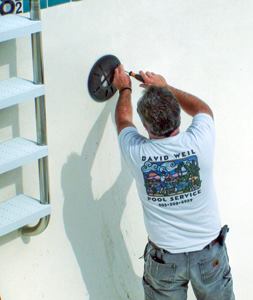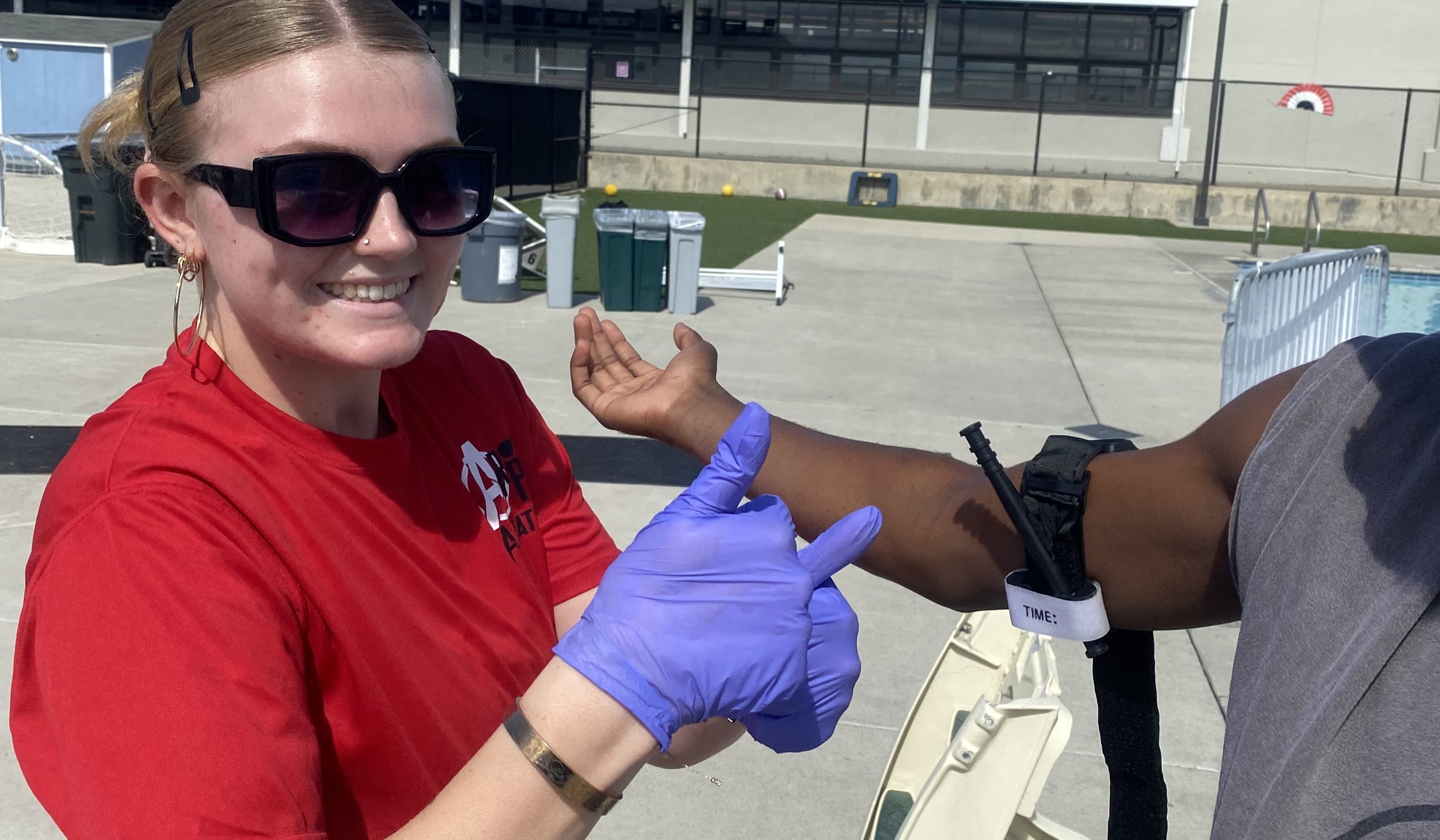For a pool to comply with the Virginia Graeme Baker Pool and Spa Safety Act, it takes more than just connecting two drains to the pump and adding a VGB-approved drain cover. Here are other important steps to ensure that the drains are entrapment-proof and adhere to the federal law.
- Ensure proper sump depth
Each drain cover has been tested to work with a sump of a certain depth, and the drain pipe sitting a minimum distance below the cover. If the pipe is too close to the cover, the drain becomes more susceptible to hair entrapment. In addition, the suction won’t be evenly distributed throughout the drain.
Consult the drain-cover manufacturer’s instructions to find out that minimum distance.
If the manufacturer hasn’t provided instructions, the ASME A112.19.8 standard for drain covers says the minimum distance between the pipe and the drain cover’s underside should equal 1 1/2 times the diameter of that pipe.
To make things easier, use pre-manufactured sump/drain cover configurations when possible. Not only are they easier to install, but they already come with a properly sized sump. In retrofits, it may be difficult to do this, since it would require chipping out the floor to the right shape and completely smoothing out the surface.
- Assess the cover
Many experts make a good living by correcting the work of other “experts” whose idea of compliance is slapping on drain covers that bear the VGB stamp and leaving it at that.
The stamp indicates that the drain has passed testing under certain conditions, including a maximum flow. Do not base a drain cover choice on what you have in your truck or the color of the finish. Instead, select a product that will accommodate the amount of flow moving though the drain.
When retrofitting, find out the total flow generated by the pump, and choose covers that can accommodate that total flow. Each drain must be able to withstand all the force generated by the pump, in case the other is blocked.
You may find that the pump simply generates too many gallons per minute for any drain. If so, look into changing the pump.
- Attach the drain correctly
For the drain cover to work properly it must be completely secure. That means no rusted screws or loose frames.
When replacing covers, the safest bet is to take out the old frame and install the one that comes with the unit. At the very least, inspect the existing frame to make sure the right size screws will lock the cover in place. If the necessary screws are larger than those the frame was made for, the frame must be torn out.
Also, if you find that someone before you added new holes to accommodate self-tapping screws, then replace the frame.
“If we can see that the plastic is still pristine and that the retrofit screws fit in exactly the same as the original screws, that we could pull up very hard and not have any movement, it’s fine,” says John Mortensen, owner of Phoenix-based Aquatic Concepts. “If we don’t have that situation, we anchor it to the pool [using a concrete anchor].” He does this by drilling down into the plaster and shotcrete, and putting in a concrete anchor.
In his experience, Mortensen has only been able to preserve about three existing frames out of 100.
MAIN ARTICLE
- Below the Surface
A dual-drain system is more than just two drains.
MORE INFORMATION
- Drain Diagrams
See what not to do when installing dual main drains.



